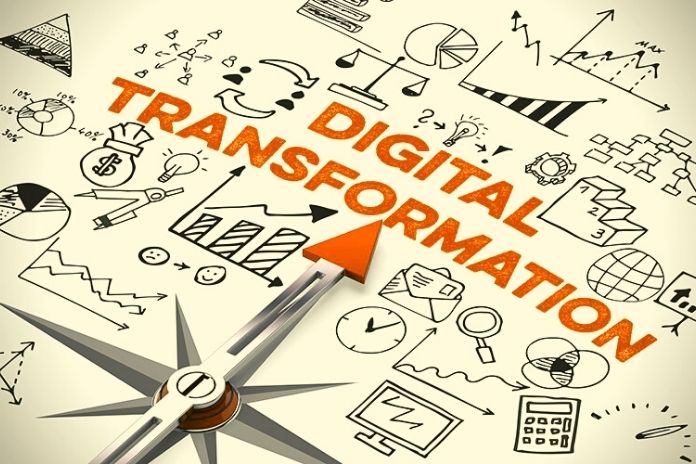IT Modernization- The success rate of transformation projects is frightening: studies show that 70 per cent fail. Sales of the largest hyper scalers, Amazon Web Services, Microsoft Azure and Google Cloud Platform, are increasing and underline the importance of cloud migration. In this dynamic environment, enterprise architects are increasingly moving into focus: With the help of effective IT solutions, they can successfully control and accompany the entire IT modernization path from the current state of the IT landscape to the cloud.
IT Modernization: First, The Inventory Is Taken
The cloud is more than new infrastructure. Simply relocating applications makes little sense and is not necessarily cheaper. The typical problems of architecture – such as the lifecycle or technology risk management of applications – do not disappear with the cloud but become even more critical.
IT Modernization: Three Phases On The Way To The Cloud
Enterprise architects provide the necessary basis for cloud migration. They can use IT solutions to design the entire process: from the first phase of assessing the cloud capability of all applications, through the concrete planning and implementation of the migration, to establishing cloud governance.
In the first phase of transformation projects (IT modernization), a meaningful inventory of all the applications available in the company must be created. For each application, it must be checked which migration strategy should be used:
- Repost: Relocation of applications to the cloud with necessary adjustments to the application (“lift-and-shift”)
- Replat form: Cloud migration with optimization of the infrastructure or relocation to other platforms (“lift-tinker-and-shift”)
- Repurchase: Replacement of an application with a new product – e.g. change from on-premise to SaaS solution (“Move to SaaS”)
- Refactor: Development of applications with cloud-native services: from monoliths to microservices architecture (“Rewrite as Microservices”)
- Retire: Switching off applications that are no longer used (“Get rid of”)
- Retain: Applications are retained and rechecked later (“Do nothing”)
Various approaches can be followed in IT modernization. The private bank Donner & Reichel AG chose a lift-and-shift path on the way to a cloud-native infrastructure: In the complex technology environment of the bank, data silos had emerged over the years through the outsourcing of IT services to large providers and the simultaneous internal development and administration of your services.
Therefore, a cloud migration requires a comprehensive audit, primarily because of the strict controls and requirements. Our tool created a clear picture of the internal and external dependencies and the decision-making basis for shutting down costly on-premise legacy systems. Forty employees from various bank departments use the tool regularly and thus contribute to improved, permanent IT transparency.
The Necessity Of Flexible Planning Of Transformation Projects
Why do so many transformation projects still fail? When planning and implementing migration – in the second phase on the way to the cloud – companies rely on familiar IT road mapping with three to five years of planning periods. However, this turns out to be too inflexible and is not linked to the concrete implementation of initiatives. There is often a lack of consistent monitoring from conception to implementation: Limitations and risks are recognized too late. In autumn 2020, we expanded our EA solution to include the Business Transformation Management (BTM) module, which enables the planning and implementation of transformation projects from today to a freely definable date in the future and the dependencies on the corporate architecture the push of a button Time.
Teams can plan different scenarios independently and check their effects: This collaboration is already known from software codes. Now we offer a solution for collaborative work on the transformation – the GitHub for architecture management.
Ensure Overview, Governance And Speed In The Cloud
Missing information about existing cloud accounts, runaway costs or insufficient allocation of responsibilities: the implementation of the migration and the establishment of continuous cloud governance is part of a successful transformation project. For this third phase of IT modernization, we provide a solution with the Cloud Native Suite to track relevant cloud KPIs, keep an eye on costs and risks or link applications with business capabilities.
The publishing house Griner + Jahre has been using our Cloud Native Suite since 2019, which offers a business context for cloud assets. It enables well-founded decisions regarding a hybrid IT landscape. New transparency was created with the Cloud Intelligence module about the multi-cloud landscapes and enterprise, and cloud architectures were merged. The module also supported the introduction of ServiceNow and the connection of relevant details of the cloud landscape with the ServiceNow CMDB. This created a database for all cloud services and instances that are operated in the cloud. The teams in operational business, the governance and ISMS teams, the solution architects and software developers benefit from this in particular.
Consider Transformation Projects Comprehensively
The cloud offers companies enormous opportunities and risks if the migration is inadequately prepared, planned, and implemented. At this point, enterprise architects can become game changers and master the challenges of digital transformation with the help of future-proof IT solutions.
ALSO READ: Cloud Migration: New Opportunities And More Flexibility For Companies

